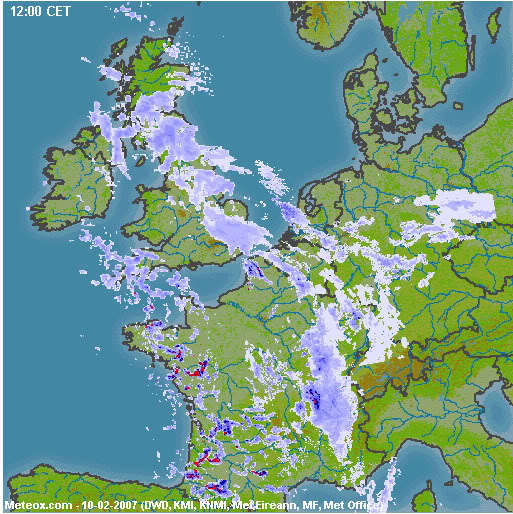I appreciate that the original question was about IFR. But as a VFR pilot, I can seem much in common.
When we get our licence first, we tend to be super cautious. We were taught to play by the rules, and we’re under the watchful eye of our instructors even though we’re now qualified and flying solo. So we try to play by the rules and ’don’t take chances’ with the weather.
You see this in lots of flights being cancelled due to minor cross winds or forecasts of prob tempo’s when the weather is gorgeous.
As we get more experienced, we push ourselves a little futher, and eventually we get caught out by some weather that was worse than expected, but we live to tell the tale, and then you look back and think…“actually that wasn’t so bad”, and it adds to your experience.
Emboldened you might be willing to take weather not as bad, but worse that you were previously unwilling to accept. At the same time you get more experienced with going to new airports, so the idea of a diversion, if necessary, isn’t a big deal.
As time goes on, and experience develops, you will find yourself willing to take on weather conditions that many less experienced pilots would shy away from.
I can only assume that the same applies to IFR pilots. As they develop more skills, and become more experienced at IFR flight, they start to think that "that radar is nice and the MSA’s are a useful safety measure, but if I know my position exactly (from multiple GPS) then I can manage without them. Maybe this comes from be forced into a situation like that without choice one time.
Then without the safety backup’s one they they make a mistake, and everyone wonders why they were doing that. But they probably felt safe doing so.
Experience can be dangerous if it teaches you that you can get away with removing various safety stop gaps. But I suspect it’s something that happens to many of us.
I often find it interesting to read this accident reports and visualise myself making the decisions. It’s easy to look at the outcome and think ’I’d never have done that!" But if you start from the begining with just the info known to the pilot at that time, it can be easier to see how they were ‘suckered in’ to their subsequent decisions. This can help balance experience teaching you that it will be alright ;)
I often find it interesting to read this accident reports and visualise myself making the decisions.
Yes, that’t the main reason why we are supposed to study accident reports and learn from them. What would I have done? The same crazy thing? Maybe I have already done it and got away with it? If so, why? And now let’s change that quickly!
I used to fly a lot as “safety pilot” with a guy who has an MEP rating but no IFR. We traveled all over Europe in the Pa44, Pa34 and C421 (depending on the number people coming along). He wanted to fly as much VFR as possible, so that he could log the flying time legally, but I let him fly the plane in any case, IFR or VFR didn’t matter. Whenever that VFR thing was safely possible (by a large margin!) I would not object. You fly, your responsability, your French nuclear power plant fines. But when the slightest doubt existed, I insisted on flying IFR: “you have to pay me anyway so let’s play it safe”. And with the C421, Eurocontrol charges had to be paid. So what? They add maybe five percent to the hourly rate in that aeroplane and the more direct routings at better altitudes – FL160 against FL95 in Germany – more than compensate that. And even if not, it’s only money. Therefore I have zero no understanding for that decision of Peters hangar mate to fly VFR with his Seneca. Why on earth? Even without oxygen he could have flown at FL120 which should be sufficient for that route. We didn’t have oxygen in any of the Senecas we hired and apart from 15 minutes at FL140 when crossing the alps, we never had to go above 120.
I may have posted this before but this was the radar image for N2195B at the relevant time

Probably not VMC at FL120, but probably mostly VMC (with CBs avoidable visually) at FL200+.
Even without oxygen he could have flown at FL120 which should be sufficient for that route. We didn’t have oxygen in any of the Senecas we hired and apart from 15 minutes at FL140 when crossing the alps, we never had to go above 120
A recent experience would make me a bit cautious at even FL120 while being in command of an aircraft.
I’ve never suffered hypoxia before, even doing vigorous exercise near the summit of various mountains in the Rockies (the worst I’ve had is a mild altitude headache). However, a couple of weeks back I went on the rack-and-pinion railway up to the top of Pike’s Peak (14100 ft) and I could really feel it. It felt sort of like the equivalent of having three pints of beer, and was entirely unexpected since I’ve been at those altitudes before without feeling ill-effect. It’s not that I had any kind of illness either that would explain it.
This suggests to me that even if you’ve never in the past felt hypoxic at FL120+, there may be circumstances where you may do so, and it may not be entirely predictable (I have my suspicions for my Pike’s Peak experience, given the activities of the night before).
Since I was just wandering around a mountain top on my own feet it wasn’t a big deal, but I have to imagine what it might have been like had it been an IFR flight in actual conditions, and if I return to that kind of flying some time in the future, I think it would be worth considering at least having a portable oxygen system for flights that high.
I think that one of the big mysteries with IFR flight (in particular but also VFR flight) is weather. You cannot learn enough about the weather, and really one needs to be an expert in it to avoid accidents.
Ex. I will not fly IFR with embedded cb’s around. This is due to a past experience I had when IFR > VFR on top at 4k became IFR again with embCb’s around. I actually flew into one and I actually thought at that moment that I was going to die (dark, rough, heavy rain). Luckily a 60 deg bank turn (under IMC) to head for a light bit of the cloud got me out and 10 minutes later I was on the ground drinking beer as a massive thunderstorm passed over the airfield. Now it is a good story but for 30 minutes that day I was crapping myself and considered giving it all up.
Also icing…this is a bit of a mystery to me as I don’t have any experience of it. Do I climb, do I descend, can I climb, do I need 02? Do I fly, don’t I fly? As such I am quite cautious about icing and will pretty much avoid a cloud at sub zero temps.
Since I have read various “Weather Flying” books but I really need to sit down and really understand the atmosphere, as it would make IFR flying a whole lot less stressful on “dodgy” days. Big boys in 777’s climb on top in 2-3 minutes. They have Wx radar and all sorts of gizmos to keep them safe, and as such they don’t have the same stress as us.
You cannot learn enough about the weather, and really one needs to be an expert in it to avoid accidents.
I have often wondered about this.
I now think that basically one cannot out-forecast those who do it for a living 24/7 (except by luck) so the name of the game becomes knowing how to drive the various sources of weather on the internet.
Nobody teaches you any of this in the met theory in the IR, which is a load of very dry stuff which I found totally impossible to relate to any actual weather data source.
This leads me to the obviously controversial conclusion that the way met is taught in aviation is a load of crap and a near-total waste of time.
Obviously one must learn about icing conditions and convective weather but in a practical way.
The situation is not made easier by the fact that a subgroup of pilots is very gung-ho and basically flies no matter what. Most of the time they don’t get killed – I think because weather is a very random thing and you could fly straight through a horrible looking occluded front on the chart and find yourself flying in calm air between layers… and the next person (probably me) picks up an inch of ice in 5 minutes in a bit of stratus.
Interesting description of an Islander in turbulence in the UK April Occurrences. Ref 201402533
The phrase no sh*t Sherlock comes to mind 
2000ft via an occluded front at night and he went up only 600ft?
I suppose these Islander flights are “fly or get fired” if the wx is technically above minima?
I’ve just come across this [ local copy ] and this relating to a bizjet going off the runway because the pilots left the control locks in.
But there is a much wider issue here.
From time to time we hear of accidents which just don’t make any sense.
The first link is worth a read. The basic idea is that once people start deviating from “good practice” they then regard the deviated practice as normal.

We had a similar thread here
What I find curious is that in the bizjet scene the pilot has regular proficiency checks, so he should know what he should be doing. In light GA there is no such thing and once you collect your papers you can pretty well avoid further checks, especially if you do what most people do and stick to your favourite revalidation examiner.
Quite frankly, the bizjet scene especially non AOC operations) is the Wild West compared to airline operations. I have been involved in both sides of late and the level of good practice tends to depend solely on the discipline and professionalism of the lead Captain/chief pilot.
There is no more oversight on a private bizjet on the M Reg than on an SR22. Especially flying with the same pilots without SOPs apart from those “developed” in operations it is easy for bad habits to kick in. I have worked th some guys who were unsuited to multi-crew operations at their current standard, and who would never have got past an airline LPC. I have seen a well known training provider pass someone who was not safe to be allowed in the aircraft because his employer had paid for the LPC already.
However, development of these kind of internal shortcuts happen everywhere that procedures are neither effective, proportionate or well reviewed.
There is no more oversight on a private bizjet on the M Reg than on an SR22
Why an M-reg and not say a G-reg? M is just a IOM validation, for a specific airframe, of ICAO pilot licenses.
the bizjet scene especially non AOC operations) is the Wild West compared to airline operations
Presumably your very generalised assessment includes Netjets and others whose view may differ.